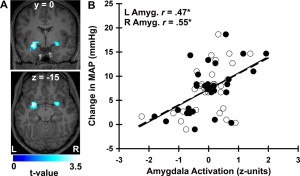Social Anxiety and the Brain
Many people with Social Anxiety Disorder want to know how they developed it,
A contemporary view from the clinical neurosciences has examined social anxiety as a ‘neuro-developmental (brain development) phenomena’, and this theory is gaining a great deal of scientific support:
Neuro-developmental theories suggest that Social Anxiety Disorder (SAD) commonly known as social phobia is actually different from other kinds of phobias, such as phobias of objects (eg. lifts), places (eg. lifts), events (eg. thunder storms) and/or animals (eg. spiders). The reason for this is that SAD appears to often be more generalised and the fears are often of a different nature to other phobias. Social Anxiety Disorder can be seen as being partly genetic and partly environmentally based, where an individual inherits a predisposition for anxiety and then through various developmental learning experiences, develops SAD. These social developmental learning experiences are currently believed to be very broad and may range from a variety of early childhood traumatic events, to learning aversive behaviours from parents to other types of aversive social learning.
The combination of genetics and developmental learning experiences appears to have an impact on the emotional centres of the brain. A specific part of the emotional brain (often called the limbic brain or limbic system), called the amygdala appears to be most affected. One important function of the amygdala is fear learning. It is believed that the amygdala may play a very central role in SAD. The amygdala may be over-active or may have developed to respond to social situations as though they are potentially dangerous and threatening.
Research is currently being done internationally to find out more about the relationships between the brain and specifically the amygdala and social anxiety disorder (SAD).
